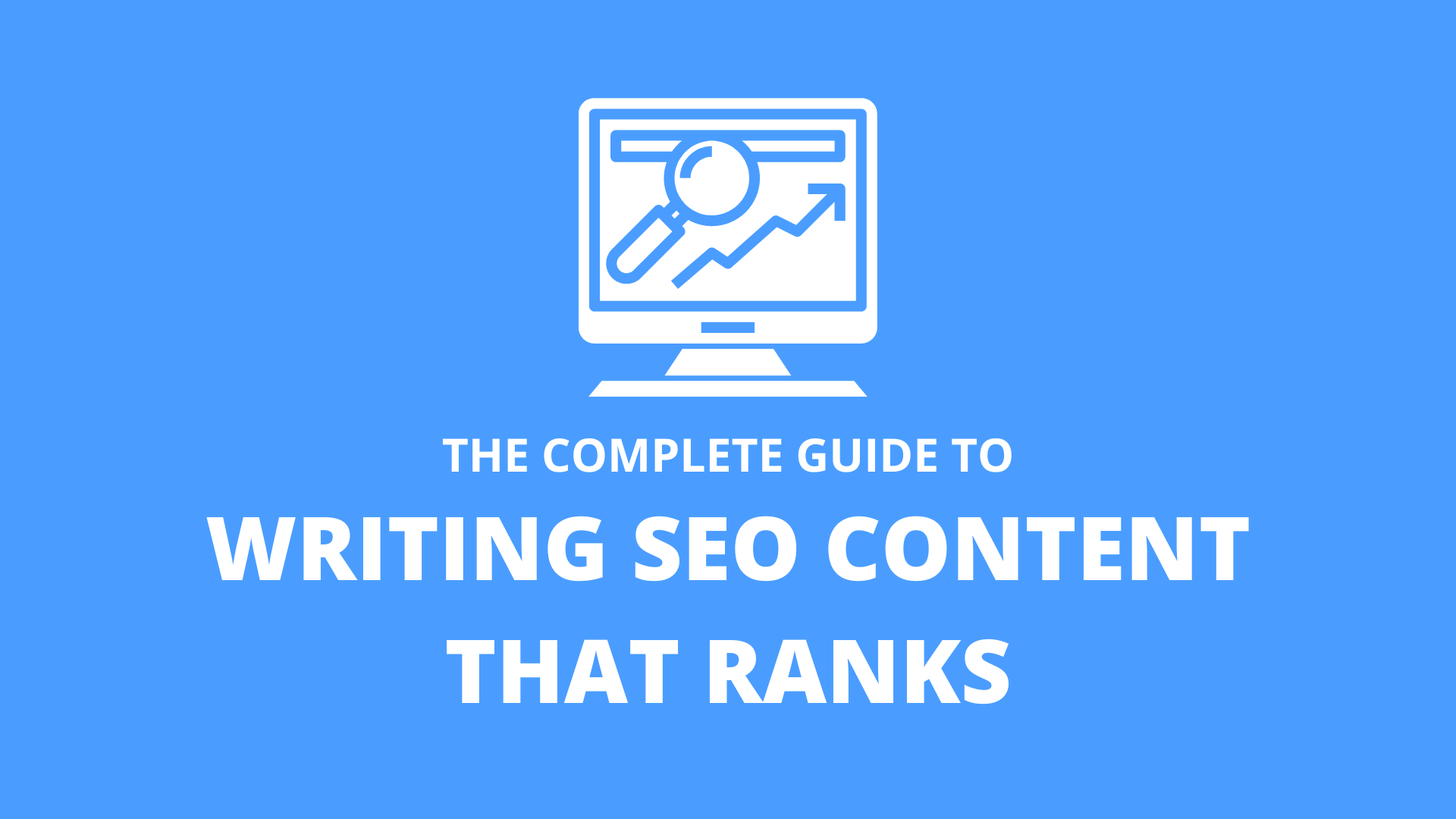
When you first set out to build links, you need to make sure your house – or your website, in this case – is in order. If you don’t, then you could potentially be wasting both time and budget.
This is why perfecting the content and information on your pages from an SEO standpoint is essential. Only then can you begin to build links, which will then help you rank well in search engines, attract organic traffic, and generate leads and sales.
Here’s what you need to know about writing SEO content that ranks.
SEO content is content that is designed to rank on Google and other search engines. It is usually focused around a specific keyword, and it can be used to attract organic traffic to a website or blog.
If there’s one thing you must remember, it is that content is king.
Creating high-quality SEO content is one of the most important things you can do to improve your website’s ranking. Not only does it help your website rank higher, but it also keeps people on your site longer, which can lead to more conversions.
It is also one of the aspects you must perfect if you plan on building links to your website as part of your SEO strategy. Why? Because having the right webpages and content makes for more effective link building.
But first, you should know that there are three main elements to producing successful content; they are keyword research, site structure, and copywriting. These three areas cannot be ignored if you want to produce the best possible content for your website.
Let’s take a more in-depth look at each of these areas.
Keyword research is the process of finding the right keywords to target for your webpages. You need to make sure that the keywords you choose are relevant to your business.
There are a number of different tools you can use to find the right keywords for your business, such as Ahrefs Keyword Explorer, Moz Keyword Explorer, and Semrush Keyword Research. You can also use Google Search Console, which is a free alternative; this tool can give you a list of keywords your site is already getting impressions and clicks for. This will then help you improve your content to rank even higher.
When you first begin looking at keywords, you need to ensure you understand the search intent behind each keyword you want to use. This means understanding what people are actually looking for when they type in a particular keyword. Are they looking to buy something? Are they looking for information? Or are they looking for something else entirely?
If you can answer these questions, you will be able to produce content that meets their needs, which is more likely to rank higher on Google. For a more in-depth explanation for search intent, read this article.
Once you have found the right keywords, you need to ensure that they are used throughout your content in a way that is natural and easy to read. This means using them in the title, in the body of the text, in the meta description, and in the alt text of images.
However, you should never stuff your content with keywords as this will make it difficult to read and it will also be penalized by Google. You should write for the topic, not the keyword; this means you should aim to include the keyword in the context of wider search intent and the keyword topic as a whole. Tools like Surfer SEO can help you with this, and this will further improve the user experience.
Here are the steps on how to complete the keyword research stage efficiently:
The first step is to research and find the right keywords for your business. You can use a number of different keyword research tools to find relevant keywords, such as the Moz Keyword Explorer, Ahrefs Keyword Explorer, Semrush Keyword Research, or your own data from Google Search Console.
Some aspects to pay attention to during the research stage are:
• Keyword difficulty: This is a measure of how difficult it will be to rank for a particular keyword. The higher the keyword difficulty usually means the harder it will be to rank, but this is not always the case; our article on the issues with Ahrefs Keyword Difficult can better explain this.
• Search volume: This is the number of people who are searching for a particular keyword each month. The higher the search volume, the more traffic you could potentially get from ranking for that keyword.
• DA/DR of Competing Sites: This is the Domain Authority (DA) and/or Domain Rating (DR) of the websites Google is currently ranking for your target keyword. The higher the DA/DR, the higher the quality of the website. Put simply, you should look at the DA/DR of the top ten sites ranking for your target keyword; if they are similar to the DA and DR of your own site, then these keywords are realistic goals for you.
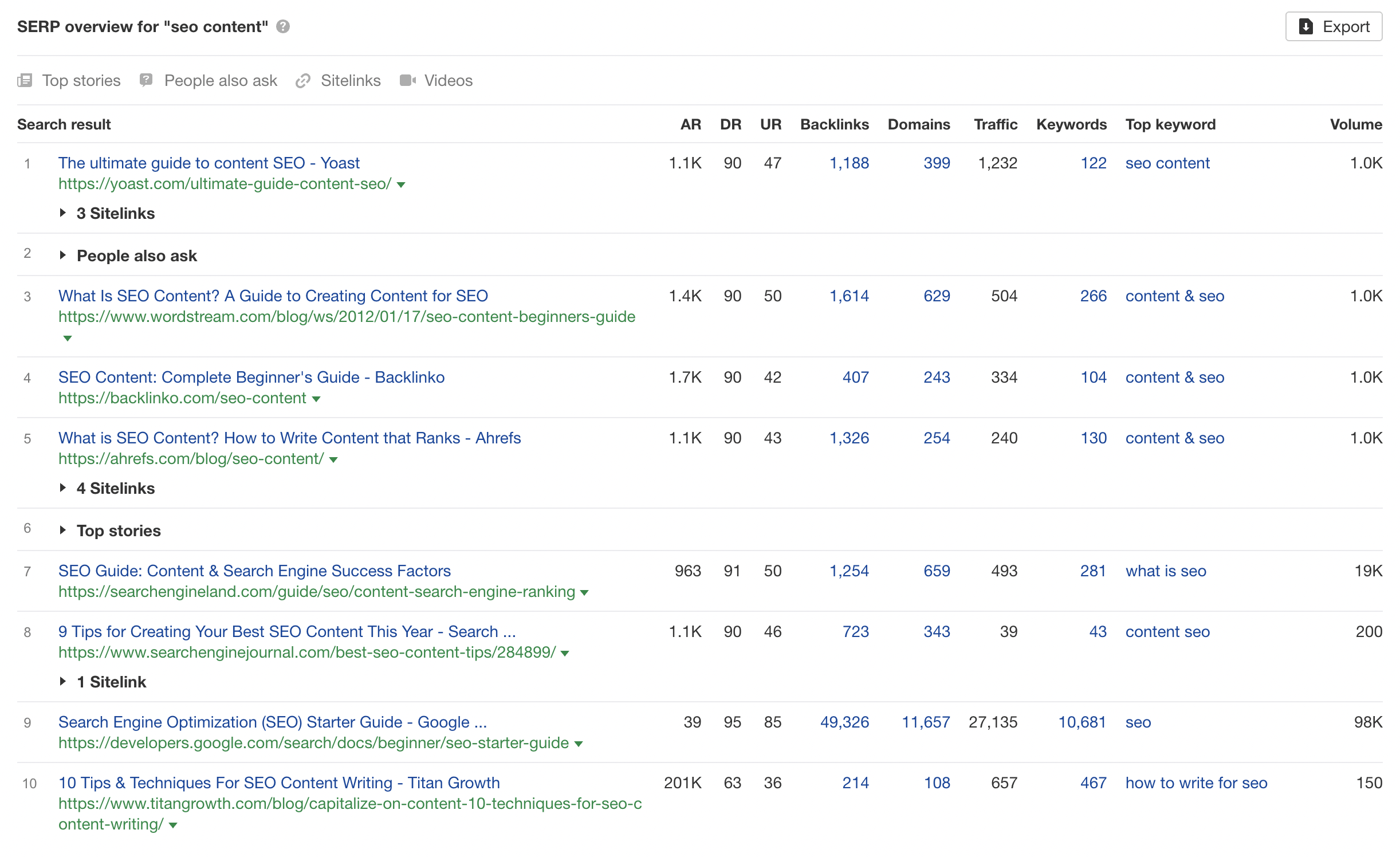
During your research, you should also analyze what keywords your site is already getting impressions for. You can use this to see where you need to improve.
Once you have found a selection of relevant keywords, you need to analyze the search intent behind each one. This will help you understand what people are looking for when they type in a particular keyword.
You should analyze the results on Ahrefs Keyword tool and/or other research tools you are using to get an understanding of what the searcher is looking for. By doing this, you will see what webpages are being ranked on the first page and try to understand what the searcher is looking for.
On the other hand, you can simply use Google to search your chosen keyword. This is a free alternative, rather than paying for Ahrefs and such.
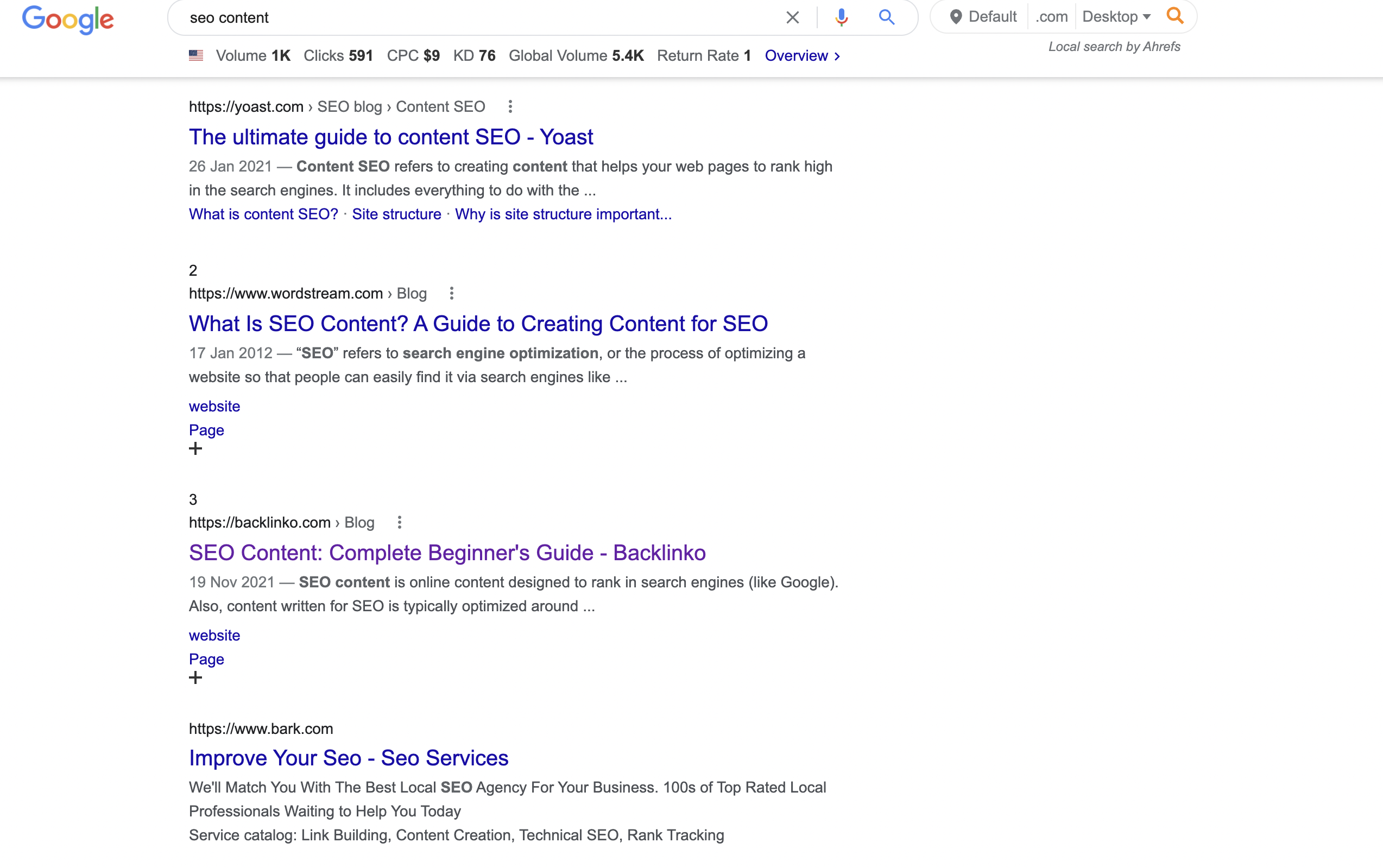
However, you should keep in mind that if the search intent doesn’t match what is being ranked on the first page, then you will be fighting against the grain. It will be a struggle to rank, even if you have a link building strategy in place.
If you would like more information on search intent, click here.
After you have analyzed the search intent behind each keyword, you need to identify any keyword opportunities. This means finding any keywords that you think you could realistically rank for.
To do this, you can use a number of different tools, such as the Ahrefs Keyword Difficulty Tool and the Moz Keyword Explorer.
Once you have identified a selection of keywords, you need to prioritize them. This means deciding which keywords are the most important for your business and which ones you want to target first.
To do this, you need to consider a number of factors, such as the search volume, the competition, and the relevance to your business. You will also need to consider whether pages that line up with the correct keyword search intent already exist on the site, or if you will need to build them.
The age of your website is also a factor to take into account when prioritizing which keywords you want to target. If you have a new website, then it would be more effective for you to focus on longtail phrases with low competition and brand keywords. Or, if your site is established and already has non-brand keywords and traffic, you can target keywords with higher difficulty.
The structure of your website is also important for ranking your content. You need to make sure that your website is easy to navigate and that all of your content is easy to find.
One way to do this is to ensure that you have a clear hierarchy on your website. This means having a home page, which leads to other pages, such as an about page, a contact page, and then your blog posts. You should also include commercial pages, category pages, and best-selling product/service pages, if you have any.
Each of these pages should be easy to find and they should all be linked together. This will make it easy for Google to index your website and it will also make it easy for people to navigate around your site.
Another important element of site structure is your URL. Your URL should be short and to the point, and it should include your target keyword. For example, if you are writing a blog post about “SEO content tips”, your URL should be something like www.example.com/seo-content-tips. You should avoid URLs like www.example.com/page-1.
This will help Google understand what your page is about and it will also make it easier for people to find your content.
Here are some tips on how to complete the site structure stage efficiently:
The first step is to identify all of the pages on your website. This includes your home page, your about page, your contact page, and any other pages you may have.
Once you have identified all of the pages on your website, you need to check for any orphan pages. Orphan pages are pages that are not linked from any other pages on your website, meaning you would need the direct URL to find the page.
You might create an orphan page if you forget to link to the page from anywhere on the main website structure. But orphan pages can also happen if you delete a page from your website but forget to remove the link to that page from your navigation menu. It can happen if you change the URL of a page but forget to update the links to that page.
After you have checked for any orphan pages, you need to update your navigation menu. This means adding any new pages and removing any old pages.
You should also update the links to any pages that have changed URL.
Once you have updated your navigation menu, you need to update your site map. Your site map is a list of all the pages on your website. It is a file that is stored on your server and it is used by search engines to index your website.
Most website software builders will automatically generate this for you, but the most common place for a sitemap to sit is your domain forward-slash sitemap, or example.com/sitemap.xml.
After you have updated your site map, you need to check for any broken links. A broken link is a link to a page that no longer exists. This can happen if you delete a page from your website or if you change the URL of a page but forget to update the links.
To check for broken links, you can use a number of different tools, such as Screaming Frog, Google Search Console, and Ahrefs Site Audit Tool.
The final element of creating successful content is copywriting. This is the process of writing the actual text for your website or blog.
When you are writing your content, you need to ensure that it is well-written, informative, and easy to read. You also need to make sure that you are using your target keyword throughout your text, without keyword stuffing.
A good way to ensure that your content is well-written is to have someone else read it before you publish it. This will help to identify any errors or areas that need to be improved. You should also use tools to ensure the correct spelling and grammar, like Grammarly.
Creating high-quality SEO content is essential if you want your website to rank higher on Google. By following the tips in this guide, you can create content that is likely to rank well and that will also help to improve your website’s traffic and conversion rate.
Here are factors that you should consider when writing content that will rank:
The first factor to consider is the type of page you are writing. This depends on the search intent of your target keyword.
For example, if you are targeting a keyword with commercial intent, then you need to write a product or service page. This is a page that is designed to sell a product or service. Or if you are targeting a keyword with informational intent, then you need to write a blog post or an article. This is a page that is designed to provide information on a particular topic.
To do this successfully, you should search the keyword on Google to see the type of results that are ranking; you can then make sure it matches your target landing page.
You can also use a keyword research tool, such as the Ahrefs Keyword Explorer, to look at the pages currently ranking for your chosen keyword. You can then see what type of page they are and use this as a guide for your own content.
If you can correctly match your target keyword to your page type, then there could potentially be an increase in trustworthiness and engagement for your site. This will, in turn, give Google more reason to rank your page as it is providing a positive user experience.
The second factor to consider is the length of your content. Generally, the longer your content is, the more likely it is to rank.
This is because Google sees longer content as being more comprehensive and, therefore, more trustworthy. Google also sees longer content as being more likely to satisfy the user’s search intent.
To find out the average length of the pages currently ranking for your target keyword, you can use a tool like the Ahrefs Content Explorer. This will show you the average word count of the top 10 pages.
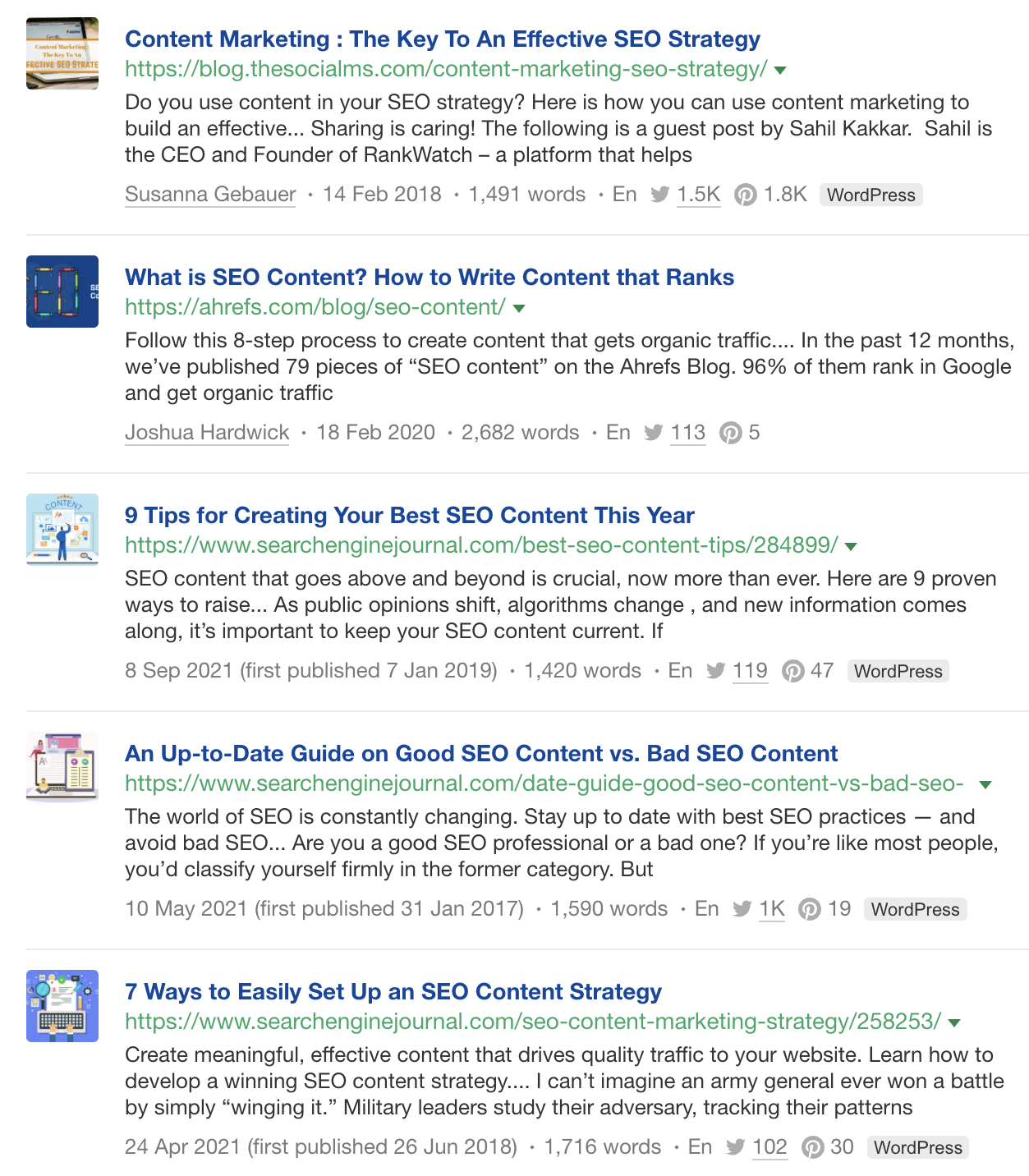
Another important factor to consider when writing content is the use of headings and subheadings.
Headings and subheadings help to break up your text and make it easier to read. They also help to highlight the most important parts of your text.
Google also uses headings to understand the structure of your content. This is why it is important to use them correctly.
Your title should be your main heading (H1), followed by H2 headings for your subheadings. You should then use H3 headings for any smaller sections within your subheadings.
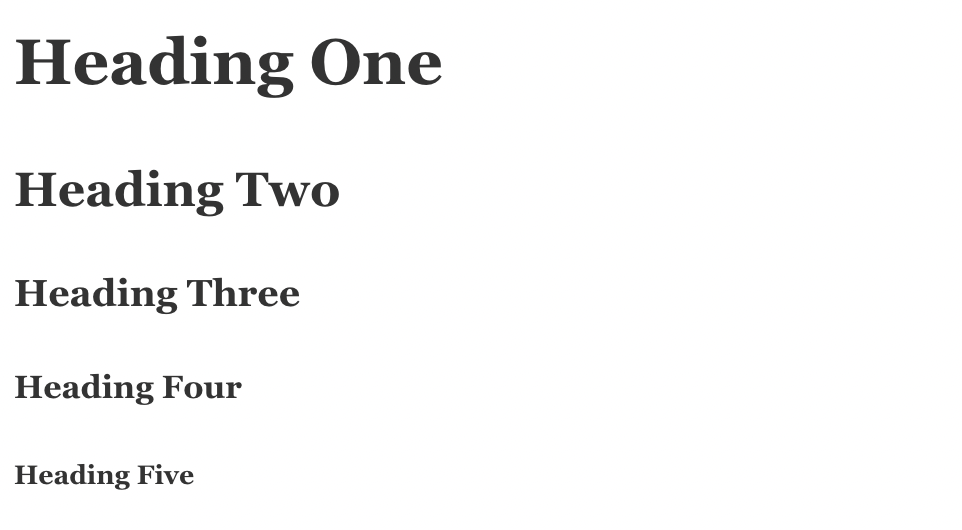
You should also consider the use of images and videos when creating content for your website. Images and videos can help to break up your text and make it more visually appealing. They can also help to explain your points more clearly.
Google also uses images and videos to understand the content of your page. This is why it is important to use them correctly and to include relevant keywords in their title and description.
When writing content, you should also consider the use of outbound links. Outbound links are links to other websites. They help to show Google that your content is authoritative and trustworthy.
To get the most benefit from outbound links, you should link to high-quality websites that are relevant to your niche. You should also ensure that your links are not broken and that they are working correctly.
In addition to outbound links, you should also consider the use of internal links. Internal links are links to other pages on your website. They help to improve the navigation of your website and they also help to boost your SEO.
To get the most benefit from internal links, you should link to pages that are relevant to the content of the page you are linking from. You should also ensure that your links are not broken and that they are working correctly.
Creating high-quality SEO content is essential if you want to rank well on Google and other search engines. To do this, you need to carry out keyword research to find the right keywords to target.
You also need to consider the structure of your website and the copywriting of your content.
Here are some of the most important aspects to remember:
Every month we give away 2 platinum tier links to new subscribers of our newsletter.
Sign up now for helpful outreach/link-building tips and exclusive discounts
* By entering the monthly prize draw, you agree to subscribe to updates from OutreachPete via email, you can unsubscribe at any time
Every month we give away 2 platinum tier links to new subscribers of our newsletter.
Sign up now for helpful outreach/link-building tips and exclusive discounts
* By entering the monthly prize draw, you agree to subscribe to updates from OutreachPete via email, you can unsubscribe at any time